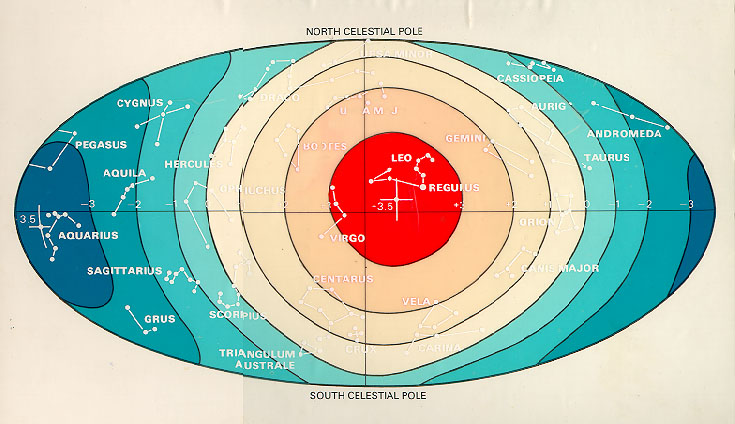U2 anisotropy experiment
Smoot, G. F. 1980 ca.
Beitrag aus dem GOM-Projekt: 2394 weitere kritische Veröffentlichungen
zur Ergänzung der Dokumentation Textversion 1.2 – 2004, Kapitel 4.
U2 anisotropy experiment / [G. Smoot]. – [USA]: WWW 1980 ca., 6 S.
URL: http://aether.lbl.gov/www/projects/u2/
This was an experiment designed to measure the isotropy and detect the first order anisotropy in the cosmic microwave background CMB that was due to our motion in the Solar System’s orbit around the Galaxy. The experiment was flown aboard the NASA Ames U2 jet aircraft.
The dipole, or more correctly first order, anisotropy of the CMB looked like this when first observed by the U2: [———]
Map of the dipole anisotropy as detected by our U2 experiment. The map varies smoothly from -3.5 thousandths of a degree Kelvin (3.5 mK) in a direction near the constellation Aquarius shown as blue to +3.5 mK in the direction near the constellation Leo is shown as red. Astronomers think the colours should go the other way; however, most people think of red as warmer and blue as colder so that this and later maps like those made by COBE (shown below) are shown the way that people will intuitively get right.
The original map was made using data from the northern hemisphere resulting from flights made from NASA Ames in Sunnyvale, California. Later measurements in the southern hemisphere, made from Jorge Chavez Airport in Lima Peru, indicate that the southern hemisphere fit the same pattern. Those additional measurements indicate that the warmest spot is actually slightly below the equator instead of slightly above. (See the 3-mm wavelength map below.) Click here for Information and photographs about the observations from Peru.
If one measures the temperature and plots it versus the angle from the warmest direction, a first-order anisotropy will follow a cosine curve as plotted in red below. The U2 data points are plotted on the same graph. Within the expected variation due to instrument noise they indicate the first-order anisotropy exists and fits them well.
Lesen Sie bitte hier weiter!
